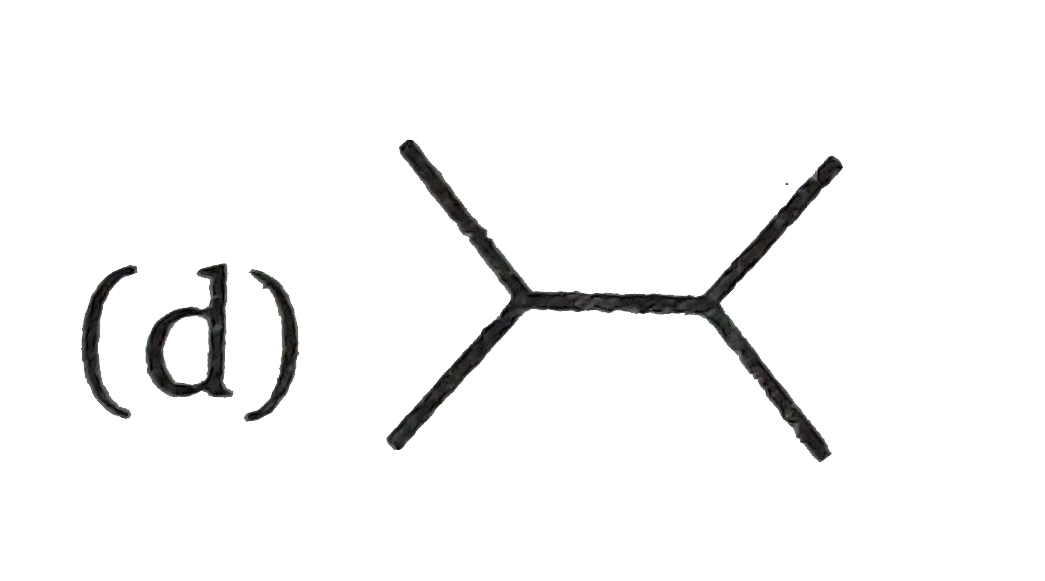CH3CH2−CH3∣C∣CH3−C∣OHH−CH3H2SO4−−−→heatPMajor
What is the major product P in the above reactions?
CH3∣CH2−CH2−CH3∣C−CH=CH2
CH3−CH3∣CH−CH3∣CH−CH=CH3
CH3CH2−CH3∣C∣CH3−CH=CH2
CH3CH2−H3C∣C=CH3∣C−CH3
The correct Answer is:D
To determine the major product P from the given reaction, we will analyze the steps involved in the dehydration of the alcohol using sulfuric acid (H₂SO₄) as a catalyst.
1. Identify the Starting Material:
The starting material is an alcohol with the structure:
CH3CH2C(CH3)(OH)CH3
This is a tertiary alcohol due to the presence of the hydroxyl (-OH) group attached to a carbon that is bonded to three other carbon atoms.
2. Protonation of the Alcohol:
When the alcohol is treated with sulfuric acid (H₂SO₄), the hydroxyl group (-OH) gets protonated to form a better leaving group, water (H₂O):
CH3CH2C(CH3)(OH)CH3+H+→CH3CH2C(CH3)(OH+2)CH3
This results in the formation of a protonated alcohol.
3. Formation of Carbocation:
The protonated alcohol loses water (H₂O), leading to the formation of a carbocation:
CH3CH2C+(CH3)CH3
This carbocation is a tertiary carbocation, which is relatively stable.
4. Carbocation Rearrangement:
The carbocation can undergo rearrangement to form a more stable carbocation. In this case, a methyl group (CH₃) can migrate from the adjacent carbon to the carbocation carbon:
CH3CH2C+(CH3)CH3→CH3CH2C(CH3)CH+2
This results in a more stable tertiary carbocation.
5. Elimination of Beta Hydrogen:
The next step involves the elimination of a beta hydrogen (H) to form a double bond. The beta hydrogens can be removed from either of the adjacent carbons:
- From the carbon adjacent to the carbocation.
- From the other adjacent carbon.
The elimination leads to the formation of an alkene:
CH3CH2C(CH3)=CH2
6. Identify the Major Product:
The major product of this dehydration reaction is:
CH3CH2C(CH3)=CH2
This compound has a double bond between the carbons, and due to the stability of the formed alkene, this is the major product.
Final Answer:
The major product P is:
CH3CH2C(CH3)=CH2
The starting material is an alcohol with the structure:
CH3CH2C(CH3)(OH)CH3
This is a tertiary alcohol due to the presence of the hydroxyl (-OH) group attached to a carbon that is bonded to three other carbon atoms.
When the alcohol is treated with sulfuric acid (H₂SO₄), the hydroxyl group (-OH) gets protonated to form a better leaving group, water (H₂O):
CH3CH2C(CH3)(OH)CH3+H+→CH3CH2C(CH3)(OH+2)CH3
This results in the formation of a protonated alcohol.
The protonated alcohol loses water (H₂O), leading to the formation of a carbocation:
CH3CH2C+(CH3)CH3
This carbocation is a tertiary carbocation, which is relatively stable.
The carbocation can undergo rearrangement to form a more stable carbocation. In this case, a methyl group (CH₃) can migrate from the adjacent carbon to the carbocation carbon:
CH3CH2C+(CH3)CH3→CH3CH2C(CH3)CH+2
This results in a more stable tertiary carbocation.
The next step involves the elimination of a beta hydrogen (H) to form a double bond. The beta hydrogens can be removed from either of the adjacent carbons:
- From the carbon adjacent to the carbocation.
- From the other adjacent carbon.
CH3CH2C(CH3)=CH2
The major product of this dehydration reaction is:
CH3CH2C(CH3)=CH2
This compound has a double bond between the carbons, and due to the stability of the formed alkene, this is the major product.
The major product P is:
CH3CH2C(CH3)=CH2
Topper's Solved these Questions
- ALCOHOLS, PHENOLS AND ETHERSBook:PRADEEPChapter:ALCOHOLS, PHENOLS AND ETHERSExercise:COMPETITION FOCUS JEE (MAIN AND ADVANCED)/MEDICAL ENTRANCES SPECIAL (MULTIPLE CHOICE QUESTIONS WITH ONE CORRECT ANSWER-II)
Explore 12 Videos
- ALCOHOLS, PHENOLS AND ETHERSBook:PRADEEPChapter:ALCOHOLS, PHENOLS AND ETHERSExercise:COMPETITION FOCUS JEE (MAIN AND ADVANCED)/MEDICAL ENTRANCES SPECIAL (MULTIPLE CHOICE QUESTIONS -III) Comprehension
Explore 8 Videos
- ALCOHOLS, PHENOLS AND ETHERSBook:PRADEEPChapter:ALCOHOLS, PHENOLS AND ETHERSExercise:VALUE BASED QUESTIONS WITH ANSWERS
Explore 4 Videos
- ALDEHYDES, KETONES AND CARBOXYLIC ACIDS Book:PRADEEPChapter:ALDEHYDES, KETONES AND CARBOXYLIC ACIDS Exercise:IMPORTANT QUESTIONS FOR BOARD EXAMINATION
Explore 29 Videos
Similar Questions
Knowledge Check
H3C−CH3∣C∣CH3−C∣OHH−CH3HBr−−→(A) Product (A) is
A B
B CA & B bothDnone
CA & B bothDnoneCH3CH2−CH3∣C∣CH3−C∣OHH−CH3H2SO4−−−→heatPMajor
What is the major product P in the above reactions?ACH3CH2−CH3∣CH−CH=CH2BCH3−CH3∣CH−CH3∣CH−CH=CH3CCH3CH2−CH3∣C∣CH3H−CH=CH3DCH3CH2−CH3∣C=CH3∣C−CH3CH3−CH3∣C∣CH3−C∣BrH−CH3nderset(Δ)EtOH−−−→(A)
Major product (A) is:A B
B C
C D
D
CH3−CH3∣C∣CH3−C∣BrH−CH3El mechanism−−−−−−−−−−→Δ(A)
Major product (A) is
View SolutionCH3−CH3∣C∣OH−CH3∣C∣NH2−CH3HNO2−−−→Δ?
View SolutionThe IUPAC name of
CH3Ch2−H∣C∣CH3−C4H9∣C∣CH3−CH3
is
View SolutionPh−CH3∣C∣OH−Ph∣C∣OH−PhConc−−−→H2SO4 Product is
View SolutionCH3−CH3∣CH∣CH3−KMnO4−−−−→(A)H+−−→Δ(B)HBr−−−→ROOR(C)
Product (C) in the above reaction is:
View Solution

